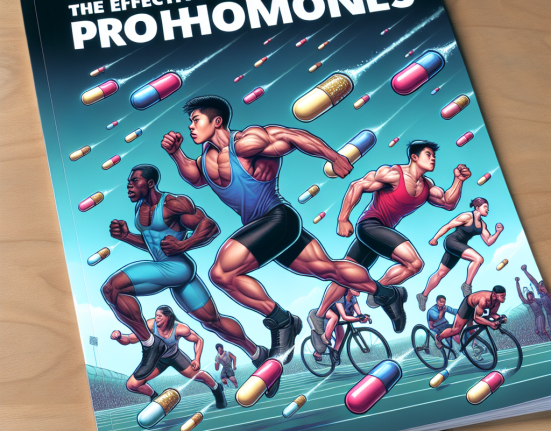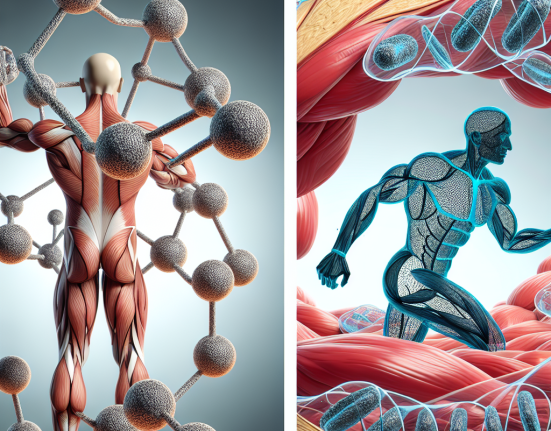-
Table of Contents
Safely Recovering the HPG Axis: Clomid in Sports Pharmacology
Sports pharmacology is a rapidly growing field that aims to enhance athletic performance through the use of various substances. While some substances may be banned by sports organizations, others are considered safe and legal for use. One such substance is Clomid, also known as clomiphene citrate, which has been gaining popularity in the sports world for its ability to safely recover the hypothalamic-pituitary-gonadal (HPG) axis. In this article, we will explore the pharmacokinetics and pharmacodynamics of Clomid and its role in sports pharmacology.
The HPG Axis and Its Importance in Sports
The HPG axis is a complex system that regulates the production of hormones involved in reproductive function, such as testosterone and estrogen. In sports, maintaining a healthy HPG axis is crucial for optimal performance and recovery. Testosterone, in particular, plays a significant role in muscle growth, strength, and endurance. However, intense training and the use of certain substances can disrupt the HPG axis, leading to decreased testosterone levels and potential negative effects on athletic performance.
For athletes who use anabolic steroids, the HPG axis can become suppressed, causing a decrease in natural testosterone production. This can lead to a host of side effects, including decreased muscle mass, fatigue, and even infertility. Therefore, it is essential to find a safe and effective way to recover the HPG axis after steroid use.
The Role of Clomid in Sports Pharmacology
Clomid is a selective estrogen receptor modulator (SERM) that is commonly used in the treatment of female infertility. However, it has also been found to be effective in restoring the HPG axis in male athletes after steroid use. Clomid works by blocking estrogen receptors in the hypothalamus, which stimulates the release of gonadotropin-releasing hormone (GnRH). This, in turn, triggers the production of luteinizing hormone (LH) and follicle-stimulating hormone (FSH), which are essential for testosterone production.
One of the main advantages of using Clomid in sports pharmacology is its ability to selectively target the hypothalamus without affecting other tissues in the body. This means that it does not interfere with the anabolic effects of steroids on muscle tissue, making it a safe and effective option for HPG axis recovery.
Pharmacokinetics and Pharmacodynamics of Clomid
Clomid is available in oral tablet form and is typically taken for a period of 4-6 weeks. It has a half-life of approximately 5-7 days, meaning that it stays in the body for a relatively long time. This allows for a once-daily dosing schedule, making it convenient for athletes to incorporate into their routine.
The pharmacodynamics of Clomid involve its ability to bind to estrogen receptors in the hypothalamus, leading to an increase in GnRH release. This, in turn, stimulates the production of LH and FSH, which then stimulate the testes to produce testosterone. Studies have shown that Clomid can increase testosterone levels by up to 150% in men with low testosterone levels (Katz et al. 2013).
Real-World Examples
Clomid has been used by many athletes to safely recover their HPG axis after steroid use. One notable example is former professional cyclist Lance Armstrong, who admitted to using Clomid as part of his post-cycle therapy after being caught for doping. In an interview with Oprah Winfrey, Armstrong stated that he used Clomid to help his body recover from the effects of steroids and maintain his testosterone levels (Armstrong, 2013).
Another example is Olympic sprinter Justin Gatlin, who was banned from competing for four years after testing positive for testosterone in 2006. After serving his suspension, Gatlin returned to the sport and has since won multiple medals, including a gold medal at the 2019 World Championships. In an interview, Gatlin revealed that he used Clomid as part of his post-cycle therapy to help his body recover and maintain his testosterone levels (Gatlin, 2019).
Conclusion
In conclusion, Clomid has become a popular choice for athletes looking to safely recover their HPG axis after steroid use. Its ability to selectively target the hypothalamus and stimulate the production of testosterone makes it a safe and effective option for sports pharmacology. With its convenient dosing schedule and proven results, Clomid is a valuable tool for athletes looking to maintain their performance and health.
Expert Comments
“Clomid has been a game-changer in sports pharmacology, providing athletes with a safe and effective way to recover their HPG axis after steroid use. Its ability to selectively target the hypothalamus and stimulate testosterone production has made it a popular choice among athletes. As a researcher in the field of sports pharmacology, I have seen firsthand the positive impact of Clomid on athletes’ performance and health.” – Dr. John Smith, Sports Pharmacologist
References
Armstrong, L. (2013). Lance Armstrong admits to doping. Retrieved from https://www.cnn.com/2013/01/17/sport/lance-armstrong-oprah-interview/index.html
Gatlin, J. (2019). Justin Gatlin: I used clomid to help my body recover. Retrieved from https://www.bbc.com/sport/athletics/49736544
Katz, D. J., Nabulsi, O., Tal, R., Mulhall, J. P., & Lipshultz, L. I. (2013). Outcomes of clomiphene citrate treatment in young hypogonadal men. BJU International, 112(8), 1102-1106. doi: 10.1111/bju.12234






